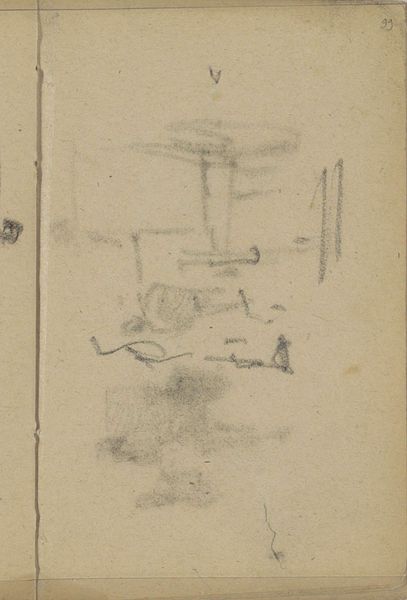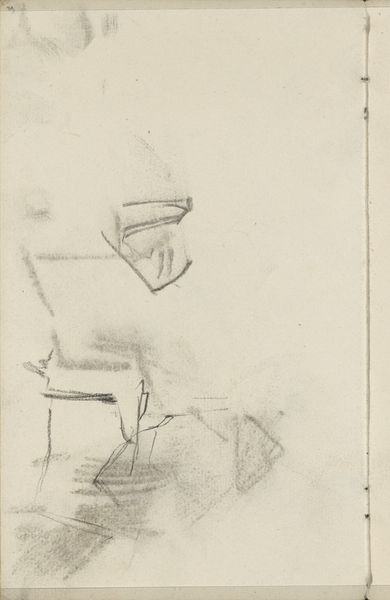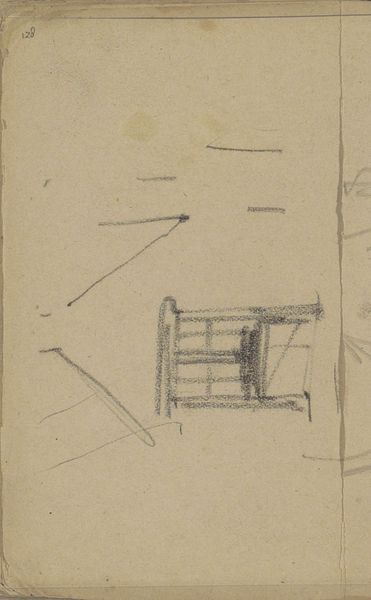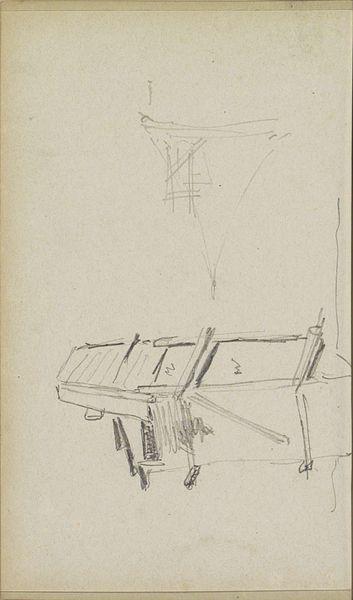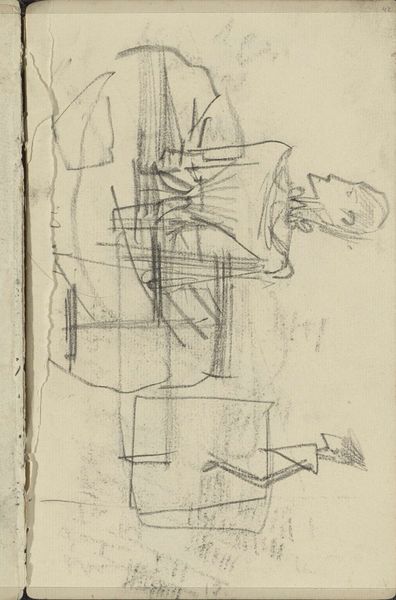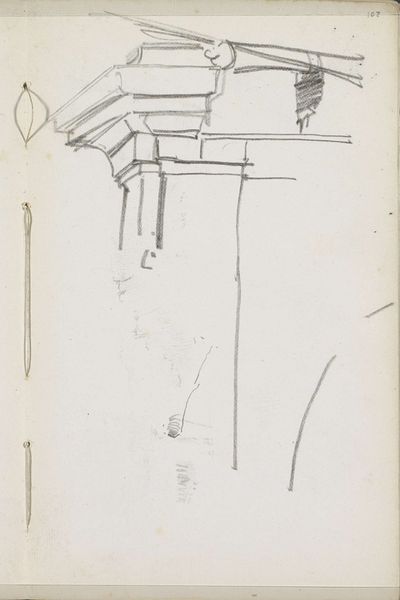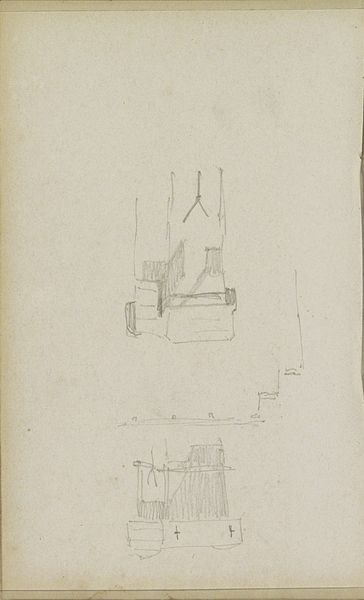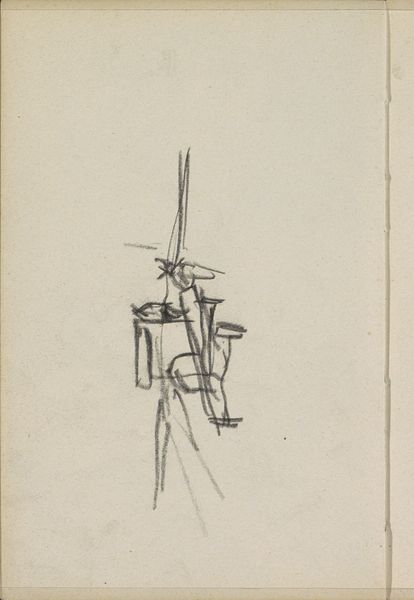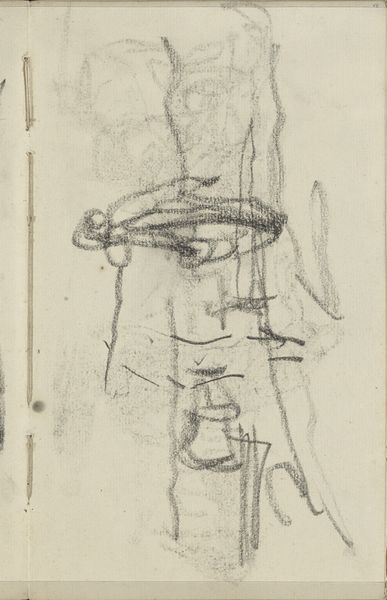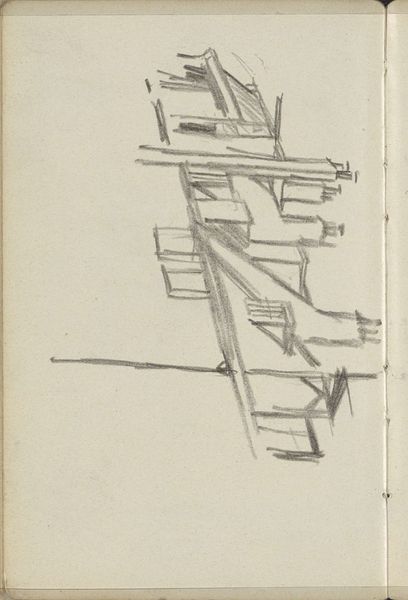
drawing, pencil, graphite
#
drawing
#
impressionism
#
landscape
#
pencil
#
graphite
#
post-impressionism
Copyright: Rijks Museum: Open Domain
Curator: Welcome. Here we have George Hendrik Breitner’s "Paardenkar," or "Horse-Drawn Cart," executed between 1881 and 1883. Breitner used graphite and pencil to create this piece. Editor: My initial reaction is one of simplicity. The sketch is raw and seemingly unfinished, which oddly appeals to me. The shapes, though basic, imply movement. Curator: Indeed. Breitner, during this period, was deeply interested in capturing the bustling city life of Amsterdam. It’s plausible that he created this sketch en plein air, seizing a fleeting moment of daily urban activity. His association with the Amsterdam Impressionism movement and the emphasis on capturing daily life confirms that he was interested in representing the unvarnished realities of his environment and his era. Editor: Focusing on form, the artist's use of line is striking, isn't it? Look at how few lines he employs, yet you immediately understand the subject matter. The contrast of dark shading implying mass and gossamer lines denoting direction gives us dynamism in minimalism. The very sparseness contributes to the kinetic feeling. Curator: That's right. The swift, almost journalistic style reflected Breitner's position amidst social changes. Photography was taking hold. Artists needed to move beyond just mimicking reality. Breitner began mirroring this with art. It reflected how people now experience their own reality and surroundings. Capturing the fleeting moment, a snapshot, and thus, in my mind, art turned to impressionism as a method. Editor: The composition is wonderfully unstable, though. You almost expect the cart to move off the page, and that’s created through line quality alone. And observe the texture created just by the pencil strokes! A limited medium deployed to powerful ends. Curator: Breitner used sketches like this as studies for his larger paintings, enabling him to create dynamic compositions rooted in the realities of Dutch life. And he certainly managed to find a permanent audience interested in exactly that view. Editor: Looking at the image, I’m still drawn to its minimalist approach to capturing a fleeting moment. There’s beauty in how the lines interact. Curator: I appreciate how Breitner distilled a scene into its essential elements, a poignant snapshot reflecting a larger narrative of societal change.
Comments
No comments
Be the first to comment and join the conversation on the ultimate creative platform.
